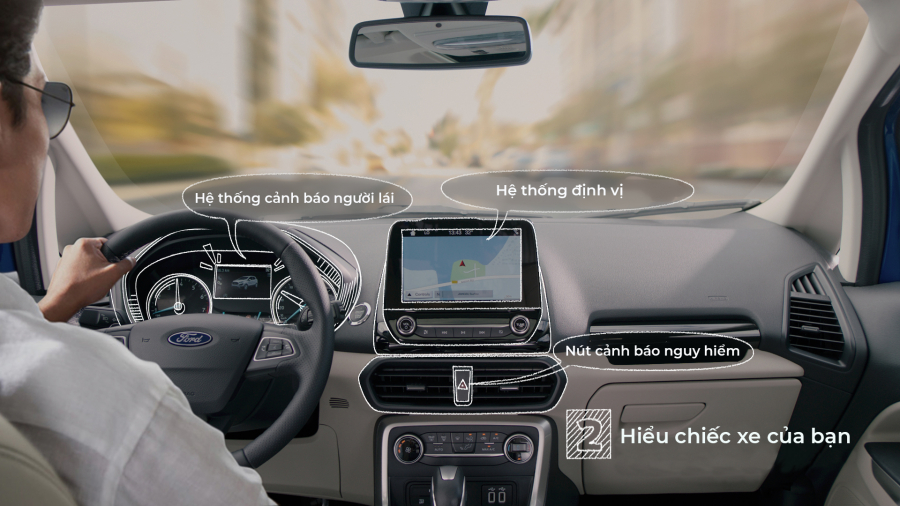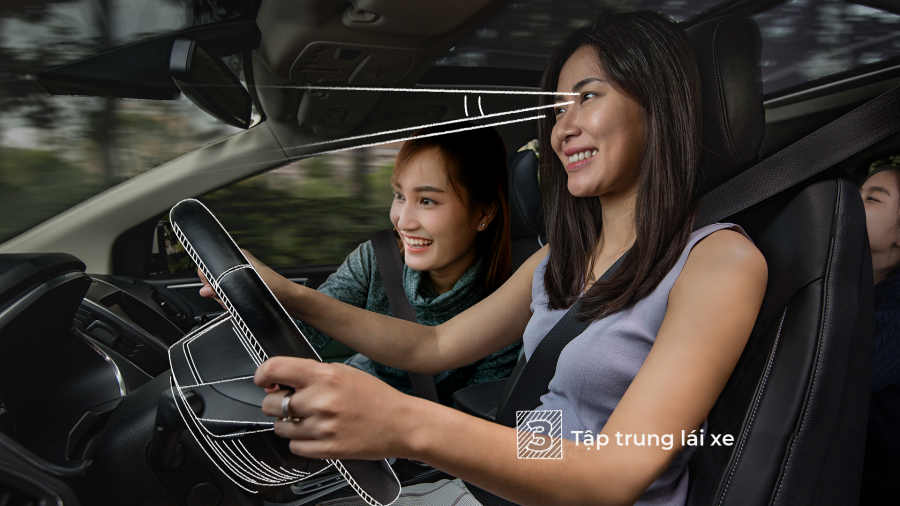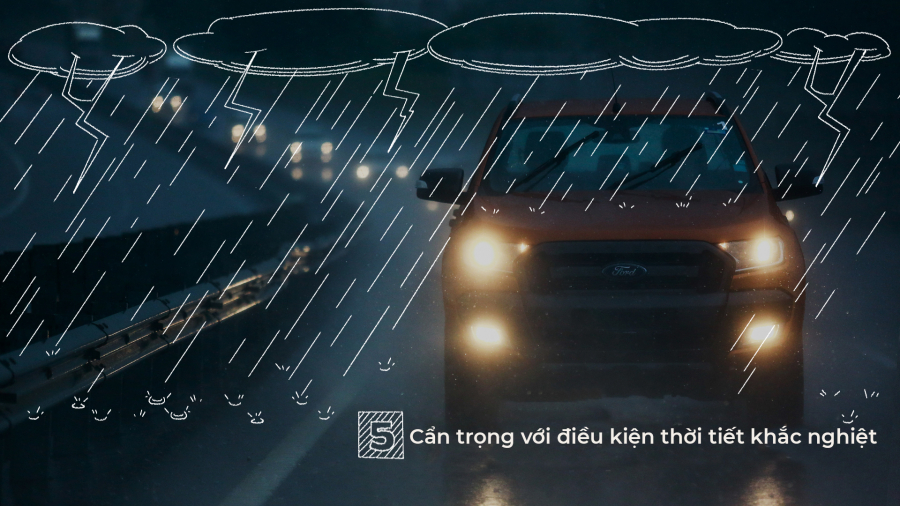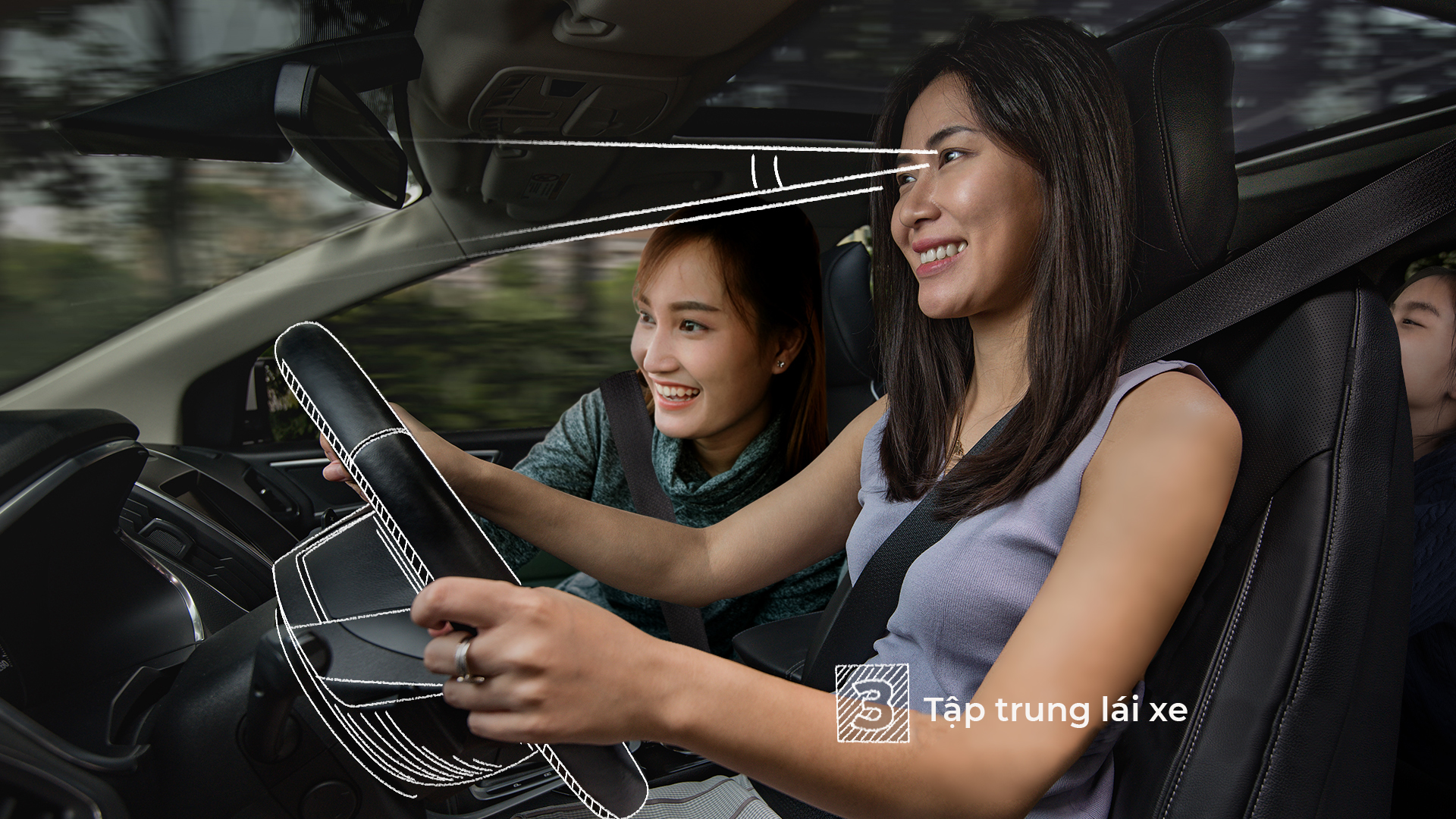Behind the wheel, you drive with ease and enthusiasm. But in today's crowded cities, traffic can be dangerous. Heavy traffic combined with distractions can cause unpredictable (or even dangerous) behavior among vehicles and pedestrians. Driving a car is safer than riding a bicycle or motorbike, but that safety is only possible when you concentrate on driving.
Fasten your seat belts
Wearing a seatbelt is rule number one. It’s considered basic advice, but many people still ignore it, especially when sitting in the back seat. Wear a seatbelt and reduce your risk of injury in a crash by half – and your risk of death by 45%.

Understand your car
This may seem obvious, but every car is different, so be sure to know enough about your vehicle to prevent any distractions along the way. Learn how to use your headlights, windshield wipers, and temperature controls before it gets dark, or a sudden rainstorm hits, and before you have to fumble with your eyes on the road to turn on the air conditioning.
Many cars today, like the Ford Focus, come equipped with driver assistance technologies that can help keep you safe on busy roads, so familiarize yourself with these features before you set off on your journey.

No distractions
The list of distractions is endless: phone notifications, social media, rowdy children, eating in the car, applying makeup, lack of sleep, loud music… But remember that the number of accidents and injuries related to distractions is on the rise.
According to Ford’s 2017 Distracted Driving Survey, 54% of drivers in Asia Pacific admitted they try not to use their phones while driving – but they still fail. Take care of any unfinished business before you get behind the wheel – your life and the lives of those around you are more important than responding to those texts.

Drive carefully
Slowing down in heavy traffic can be frustrating for even the most experienced driver. Here are some strategies to help you drive more carefully.
Always be aware of your surroundings, especially when backing out of a parking space, changing lanes, or turning. Using parking assist and other driver-assist technologies like Ford's Blind Spot Information System (BLIS) with Cross Traffic Alert will let you know if other vehicles are in your blind spot. Part of Ford Co-Pilot360™ driver-assist technology, BLIS is designed to help detect and alert the driver if a vehicle enters the blind spot area on either side of the vehicle. When backing out of a parking space, these sensors are used to detect vehicles approaching from the side.
Other “active defensive” driving techniques include:
- Use turn signals.
- Control the steering wheel with both hands.
- Watch out for animals! Small animals can suddenly dart out onto the road, and even larger ones can suddenly paralyze traffic.
- Stay away from the “road monsters”, and remember, this is not a race! The only finish line is to get home safely, so obey the speed limits when participating in traffic.

Keep an eye on the weather
As the weather changes, so do the traffic conditions on your roads. Practice driving in bad weather in a safe, isolated location to see how your grip, braking and steering respond at different speeds – and if possible, take an experienced driver with you. Practicing will help you stay calm in challenging situations on any journey, whether it’s to school, work or on a road trip.
During the rainy season, you should note the following points to ensure safety: Replace old wipers before the rainy season and check your tires to make sure they are properly inflated; Turn on your headlights when the outside light is low; Turn the steering wheel slowly. Driving at high speeds can cause your car to skid/lose traction, or climbing on slippery pavements can also cause you to lose control.
Following these tips and taking a Safe Driving course will help you avoid being counted in the accident statistics and contribute positively to responsible driving. The Ford Driving Skills For Life (DSFL) program in Vietnam is now in its 11th year and has provided free training to more than 15,000 students in 14 cities and provinces; including students at major universities in Hanoi and Ho Chi Minh City as well as transport service providers, truck, bus and taxi drivers since 2008. The program is also present in many countries across the Asia-Pacific region, equipping young drivers to expectant mothers, commercial vehicle drivers and farmers. The course will cover methods of recognizing hazards, mastering the vehicle, handling speed and situations, recognizing the dangers of distracted driving and much more.


































